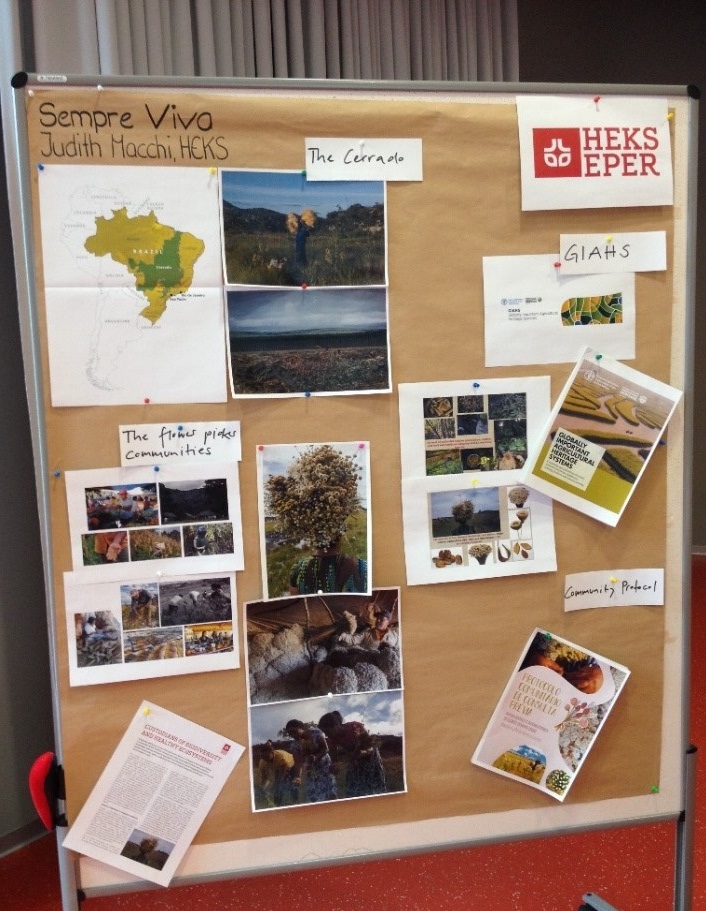Everyone
is talking about Nature-based solutions, but what are they exactly and
do they really have the potential to foster sustainable development?
Those were the questions at the core of the event organized by the
Global Programme Climate Change & Environment and the Global
Programme Water, on November 21st in Bern.
A common understanding
Nature-based
solutions (NbS) are not about mainstreaming nature or conservation as
such, but about looking at where nature can or cannot be used as a
solution. According to IUCN, NbS are "actions
to protect, sustainably manage, and restore natural or modified
ecosystems, that address societal challenges effectively and adaptively,
simultaneously providing human well-being and biodiversity benefits". James Dalton, Director of the Global Water Programme at IUCN, declared that despite being referred to as 'the new kid on the block', NbS are nothing but new; however there is a momentum and growing (business) interest for them. Janine Kuriger, Head of the Global Programme Climate Change & Environment at SDC, and Patrick Sieber, the new focal point of Climate Change & Environment,
both mentioned that while, the term is currently all over the place
nowadays, there are different understandings of what NbS solutions
encompass and of the role they could play in fostering sustainable
development. Adopting the perspective of climate change, environment and
water, the event provided a space to unpack this term to reach a shared
understanding. Daniel Maselli, the new focal point of SDC's Water Network RésEAU,
encouraged participants to have an open mind during this learning
journey, while reflecting on how we could change the rationale of our
business models, from "business for profit" to "business for the
benefits of people and nature".
Setting the scene
For James Dalton,
social acceptance of NbS is difficult, as those solutions require time
and people that are concerned with their immediate local benefits.
Making use of today's technologies, David Nabarro, Strategic Director of 4SD, stated through a recorded video message that more emphasis should be put on the local and national level rather than on the international one at which we are currently working. Elise Buckle from SDG Lab, declared that the question is not to know if the solutions work, as they do, but if there is political will and available funding to
scale up these solutions. Participants from the public said that the
fact that the tools are not sophisticated enough is problematic for
financial valuing and the quantification of benefits. A question was if
there is a need to reach international consensus and to come to a new
international agreement on NbS. The answer was that there is no need for
this as we should make the best out of one we already have: the Paris
Agreement.
Break-out sessions - project deep dive
Participants
were invited to split into four groups and to join interactive
break-out sessions. One session was on 'Learning watersheds in Ethiopia –
solving the degradation problem', by Isabelle Providoli from CDE. The second one was on 'MiParamo – mobilising investments to preserve high Andes wetlands', by Erika Zarate from Good Stuff International. The thrird was on 'Meeting the degradation challenge in Tajikistan – letting the vegetation return', by Boris Orlowsky from Caritas.
The fourth was on 'Sempre Viva – flower picker communities become first
Globally Important Agricultural Heritage System in Brazil', by Judith Macchi from HEKS.
The photos from the session on Sempre Viva testify that the group
sessions were fruitful for thinking out of the box. Some of the elements
discussed were the needs to factor in external costs and to recognize
communities as custodians of healthy ecosystems, whose services should
be socially valued and paid for.

The Sempre Viva project from HEKS
Group discussion on the Sempre Viva project from HEKS
Financing NbS and accelerating the uptake
Alexandra Frank, from South Pole,
explained how today NbS' source of financing is a combination of public
sector and philanthropy, while there is an urgent need for private
funding. Nina Saalismaa, from ZOï Environment Network,
declared that we should focus on three elements to upscale NbS: 1)
ensuring multi-stakeholder participation; 2) addressing knowledge gaps
on the implementation (need for guidelines and standards) and the
evaluation sides (quantification of benefits and measurement of
effectiveness) and 3) bringing funding into NbS.
Break-out sessions
Participants
were again invited to choose between four different break-out sessions.
Two session were on financing, one on the 'Global Fund for Forests and
Nature', by Preeti Sinha from FFD Ventures; the other one was on 'Land-Use Impact Funds' by Urs Dieterich from South Pole. The two other sessions were on the topic of upscaling, one was on 'Scaling up implementation of NbS' by Radhika Murti from IUCN; the other session was on 'Policy influence and relevance of upscaling NbS' by Sandeep Sengupta
from IUCN. Some elements discussed during the session on policy
influence were the link between the Paris Agreement and NbS: while 60%
of countries incorporated them in their national determined
contributions, there is little recognition of other NbS apart from
forest ecosystems (e.g. mangroves). Also despite their contribution to
30% of the reduction of carbon dioxide (CO2) emissions, NbS
receive only 3% of the budget. The role of cities and local governments
in complementing national governments was also discussed.
A new narrative
We are used to have ecosystems services for free,
which results in public opinion, governments and private sector
resisting against the recognition of their value and their pricing. For Johan Gély, Head of the Global Programme Water at SDC, the impact of NbS goes beyond environmental considerations: NbS are bringing additional security to the population. It would thus be interesting to mobilize a peace narrative when promoting NbS.
